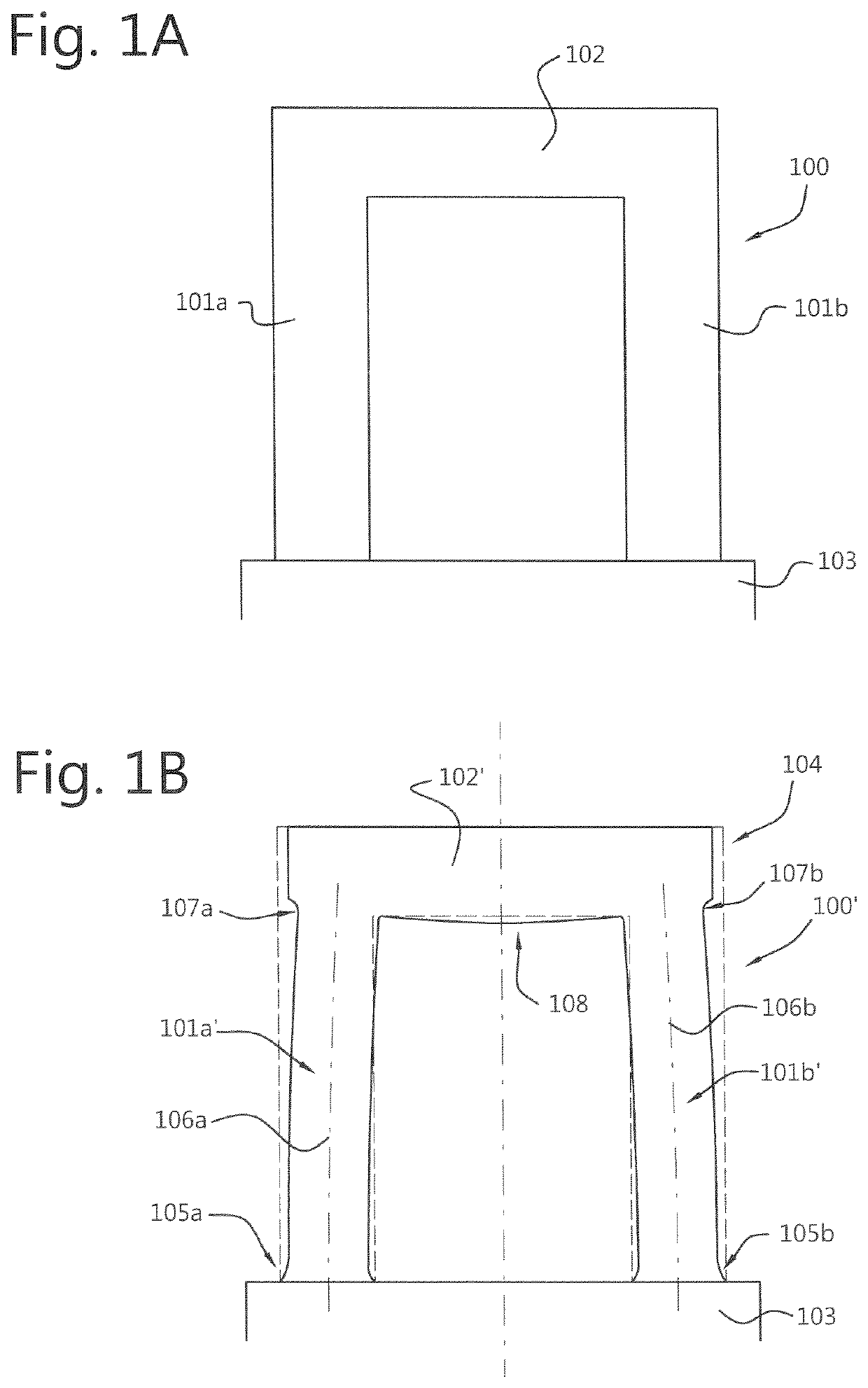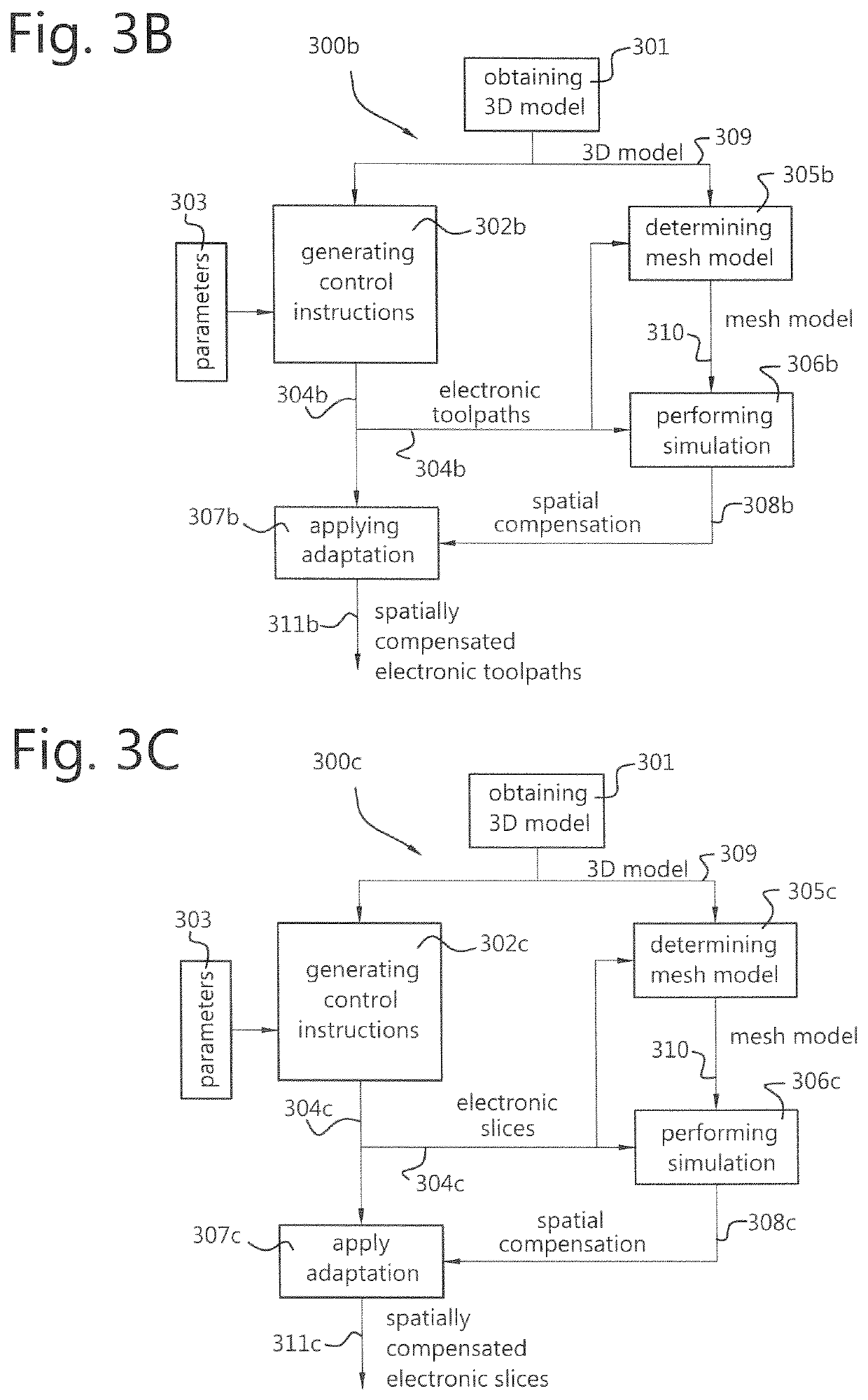Generating adapted control instructions for a 3D printing process
a 3d printing and control instruction technology, applied in the direction of additive manufacturing processes, manufacturing data acquisition/processing, design optimisation/simulation, etc., can solve the problems of internal mechanical stresses and deformation of printed objects, unfavorable printing time of a layer, heat trapped inside printed objects, etc., to increase process reliability, accurate follow the top surface, effect of constant pressur
- Summary
- Abstract
- Description
- Claims
- Application Information
AI Technical Summary
Benefits of technology
Problems solved by technology
Method used
Image
Examples
Embodiment Construction
[0101]FIG. 1A shows a two-dimensional (2D) representation of a 3D model of an exemplary 3D object 100 to be manufactured. The 3D object 100 has two upright columns 101a, 101b placed on a base 103, and a crossbar 102 across the tops of the columns. The object 100 can be manufactured according to the state of the art using a 3D printing system using material extrusion (ME).
[0102]The ME process according to the state of the art follows the shape of the object 100. When manufactured using the ME system, the printhead is controlled such that it deposits the feedstock material according to electronic toolpaths which in the art are generated using a so-called slicer software tool, wherein a 3D model of the 3D object 100 is translated into slices, i.e. defining layers bottom up of the 3D object, which slices are used to generate electronic toolpaths enabling the ME system to complete the 3D object 100 to be manufactured. When using for example Fused Deposition Modeling (FDM) techniques to m...
PUM
| Property | Measurement | Unit |
|---|---|---|
| degrees of freedom | aaaaa | aaaaa |
| physical property | aaaaa | aaaaa |
| temperature | aaaaa | aaaaa |
Abstract
Description
Claims
Application Information
 Login to View More
Login to View More - R&D
- Intellectual Property
- Life Sciences
- Materials
- Tech Scout
- Unparalleled Data Quality
- Higher Quality Content
- 60% Fewer Hallucinations
Browse by: Latest US Patents, China's latest patents, Technical Efficacy Thesaurus, Application Domain, Technology Topic, Popular Technical Reports.
© 2025 PatSnap. All rights reserved.Legal|Privacy policy|Modern Slavery Act Transparency Statement|Sitemap|About US| Contact US: help@patsnap.com



